bird-song.ch's forest birds
bird-song.ch Waldvögel
| Bird | Description | Audio |
| improvised melodic | ||
| flourish | ||
 Common blackbird ■■
Common blackbird ■■ |
flourish improvised melodic slow low-high (1-7 KHz) .
Other: Gut zu erkennen ist die Amsel.
Sie singt melodiös, erklärt Heller, «zuerst flötend und dann gegen Schluss so schnirpslig».
Die Amsel singe gerne dort, wo sie gut gehört werde, etwa vor Hauswänden, die den Schall nicht schlucken.
Ich wollte schauen was schnirpslig heisst, aber diese ist diese einzige Verwendung, die Google kennt!
Der flötende Teil ist relativ tief, 1.5-3 KHz, der schnirpslige aber 2.5-7 KHz.
(Schnirpslig ist ein schones Wort das der Redner erfunden hat - Google findet nur diese eine Webseite mit dem Wort!) [Von der SRF Webseite:]
Song: | ♫ |
| stereotype melodic | ||
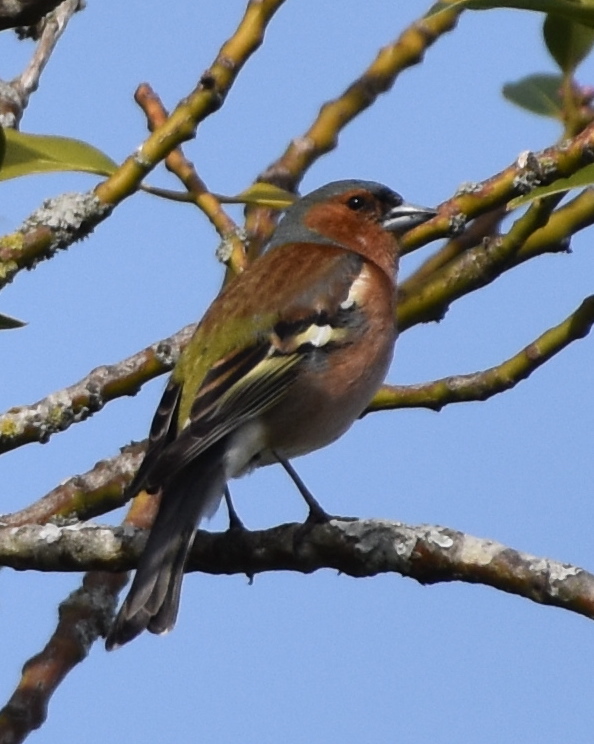 Common chaffinch ■■
Common chaffinch ■■ |
stereotype melodic slow medium (1-5 KHz) .
General: A medium long phrase that slowly descends (I think of it bouncing down a staircase), then usually takes a
jump up before a final descent. Song: | ♫ |
| simple rhythmic | ||
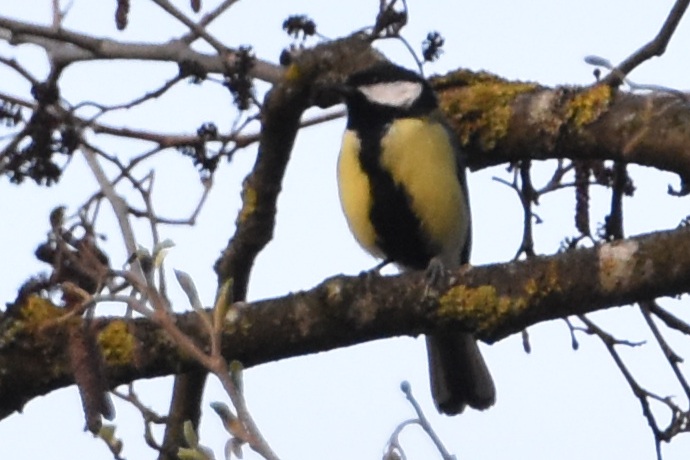 Great tit ■■
Great tit ■■ |
simple rhythmic slow medium (1-5 KHz) .
Said to have a repertoire as a species of 50 or more different songs, albeit simple ones, up to 10 per individual.
Females prefer a male with a large repertoire. One two-note song sounds like a squeaky bed.
Song: Nabu: Die erste Vogelart, die wir im Jahr hören, ist meistens die Kohlmeise mit ihrem typischen Läuten: "Zip Zäh" oder "Zip zip Zäh". [NABU Experte Lars Lachmann bei Deutschlandfunk Nova] | ♫ |
| improvised melodic | ||
| fluting | ||
|
|
fluting improvised melodic fast high (3-9 KHz) .
General: High pitched but also going low, e.g. 2.9-7.7 KHz. Song: |
♫

|
| mimicry | ||
|
|
mimicry improvised melodic fast medium (2-5 KHz) .
They sometimes sing like a blackbird on speed - also non-stereotypic, seemingly improvised,
in short bursts.
Our local guy ends most of his songs with the same seven notes, which I find a good way to confirm the identification. In Ticino we often heard the 'Leiern' sound - the warblers would sing just the first 3 notes of a longer song, then stop. The order varied; high-medium-low I call 'Figaro' as in the opera, low-high-medium 'whiskey bar', as it sounded to me like the Kurt Weill lyrics, 'O-oh-show me-the-way to-the-next whis-ke-bar' - but the warbler usually stopped after 'way' or 'next' The British authors of The Sound Approach claim to hear 'a warblel and a whistle'.
Song: | ♫ |
| simple rhythmic | ||
|
|
simple rhythmic slow high (3-9 KHz) .
Seems to consist of 3 notes repeated randomly, occasionally just 2 notes.
Though NABU.de says they stop singing at the end of July, I do hear their 3-note song occasionally in October,
but just one or two repetitions.
Song: | ♫ |
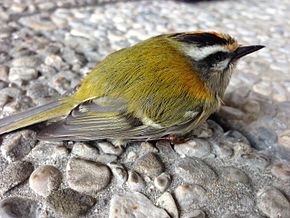 Common firecrest ■■
Common firecrest ■■ |
simple rhythmic fast high (6-8 KHz) .
Very high rhythmic repetition of about 3 seconds
Song: |
♫

|
| improvised melodic | ||
| swoop | ||
|
|
swoop improvised melodic slow low-high (2-9 KHz) .
Paced like a blackbird, humorous mix of elements like a nightingale. Huge range, elements from 2-5 KHz, others 6.5-9 KHz. Can sing for up to 50 minutes, and a male may know 100 melodies in its repertoire.
Song: | ♫ |
| stereotype melodic | ||
|
|
stereotype melodic slow high (6-8 KHz) .
|
♫

|
| simple rhythmic | ||
| trill | ||
|
|
trill simple rhythmic slow high (3-9 KHz) .
General: High-pitched, often descending (hhll), occasionally ascending. "Christina compares it to a ping-pong ball dropping. [In Januar singt die Kohlmeise als erster Vogel in Deutschland], dann kommt die Blaumeise dazu. Song: |
♫
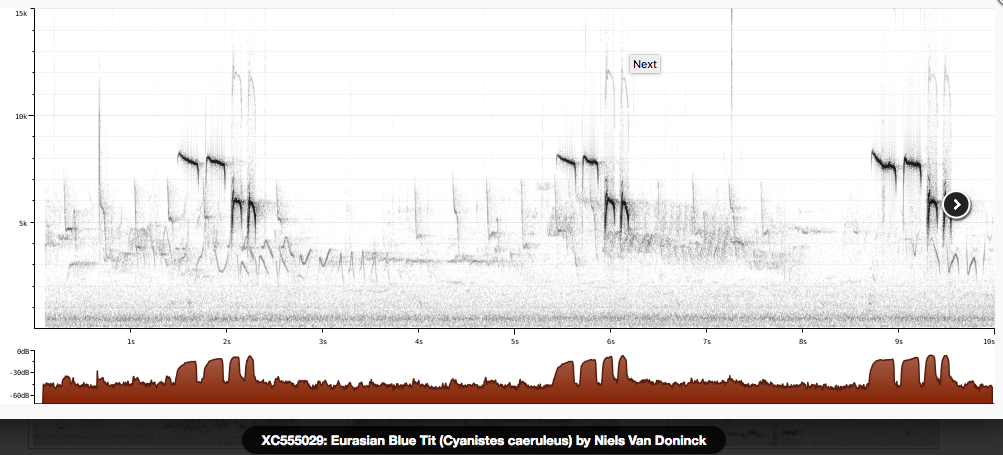
|
|
|
.
Automatically generated from Xeno-Canto recording
Song: | ♫ |
| stereotype melodic | ||
| trill, rasp | ||
|
|
trill, rasp stereotype melodic fast low-high (2-7 KHz) .
General: Sequence of 4-6 rhythmic elements at different pitches.
A sort of trill is often start or end of the sequence,
there are slides.
Song: | ♫ |
| simple rhythmic | ||
| slur | ||
|
|
slur simple rhythmic fast high (3-9 KHz) .
Higher-pitched than great tit,
with more slurs instead of pure notes.
Usually 2 or 3 notes in varied order.
To me it seems they have a repertoire of songs, like their 'big brothers', the great tits.
Song: | ♫ |
| stereotype melodic | ||
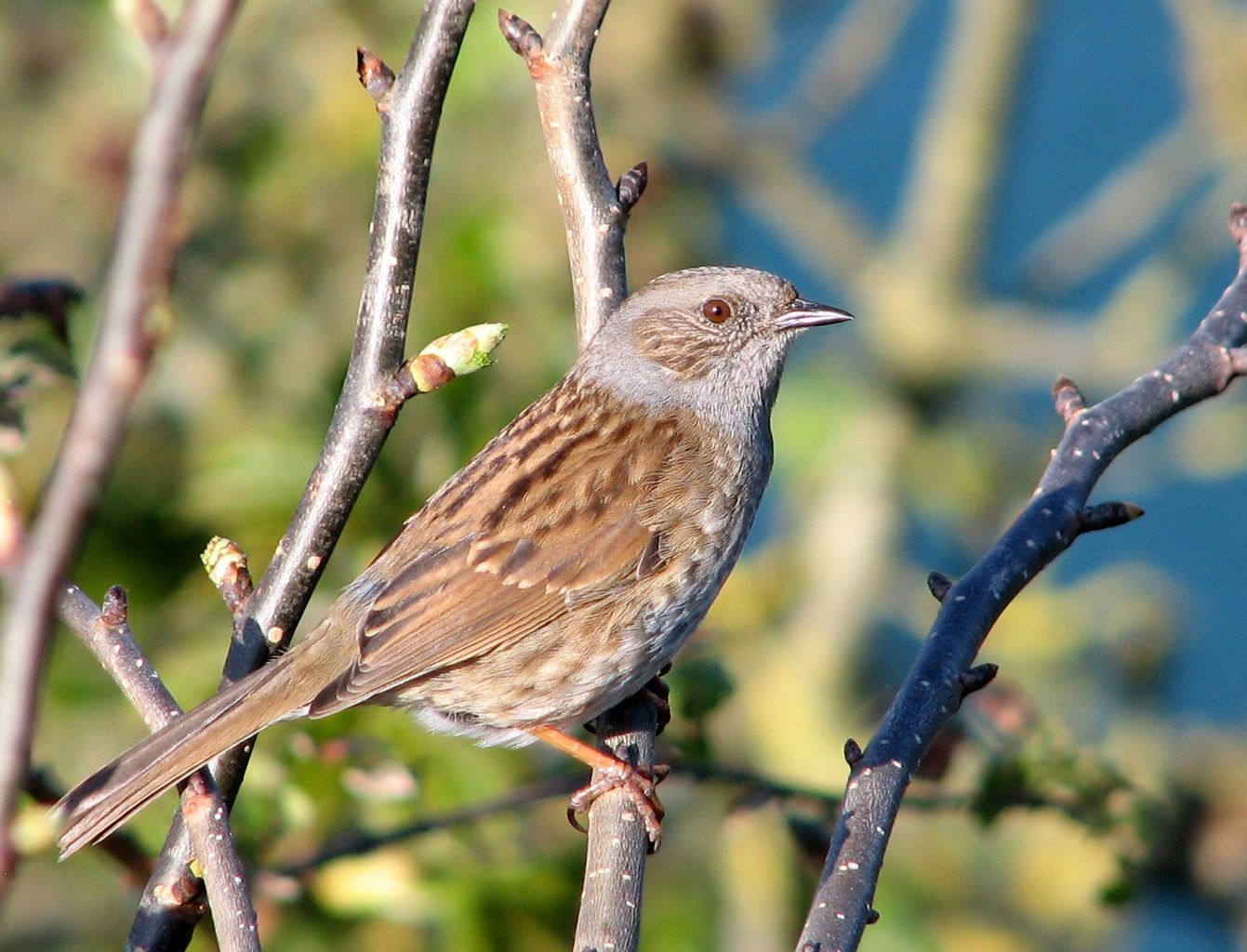 Dunnock ■■
Dunnock ■■ |
stereotype melodic fast high (4-8 KHz) .
General: High-pitched, repetitive but complex little tune. Song: |
♫

|
| non-musical | ||
| mimicry, cawing | ||
|
|
mimicry, cawing non-musical fast medium (1-5 KHz) .
Harsh crow-like call, or quiet questioning, 'grumbling', or plaintive cries.
Song: |
♫
|
| improvised melodic | ||
| whoop, weird, mimicry | ||
|
|
whoop, weird, mimicry improvised melodic slow medium (1-5 KHz) .
I find their individual song amusing, with its (long) whoops and weird noises.
As a group, they're just noisy!
Song: | ♫ |
| trill | ||
|
|
trill improvised melodic fast high (3-9 KHz) .
High-pitched, melodic, very variable with many trills and whistles.
Song: | ♫ |
| simple rhythmic | ||
|
|
simple rhythmic fast low-high (2-10 KHz) .
Higher-pitched than great tit, sometimes repetitive 1- and 2-note tunes like them, sometimes simple melodies, usually pure, sometimes chirpy or raspy. BirdID at Nord U says 'Song: A simple one or two note call repeated in series. Usually rising slightly in pitch, and with a "liquid" quality.'. At bird-song.ch it's hl-rest-hl, or 7-8 2-noter swoops. bird-song.ch names lh-break-hl as a pistjä call and also has a series of 7 or 8 falling 'swoops'.
Song: Klapperlied - 6-8 Noten 'angeschlagen' |
♫

|
| one note | ||
|
|
one note fast medium (1-5 KHz) .
Song: Other: Song a simple series of loud notes. [Link] |
♫
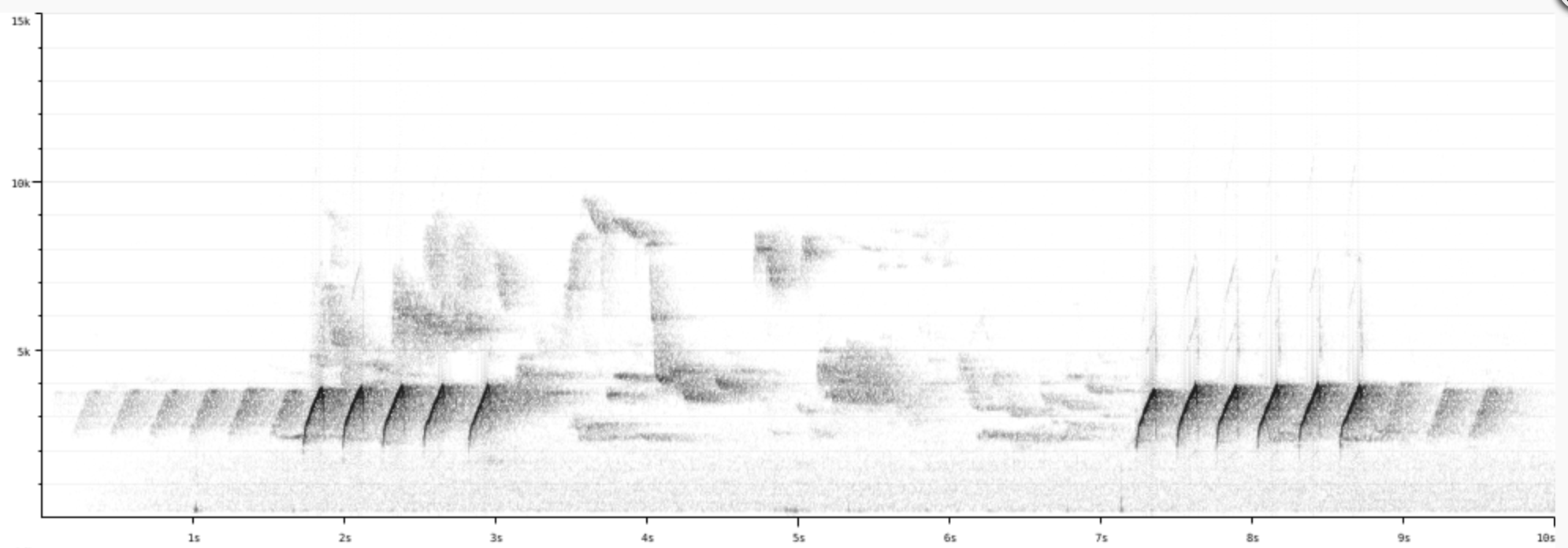
|
| stereotype melodic | ||
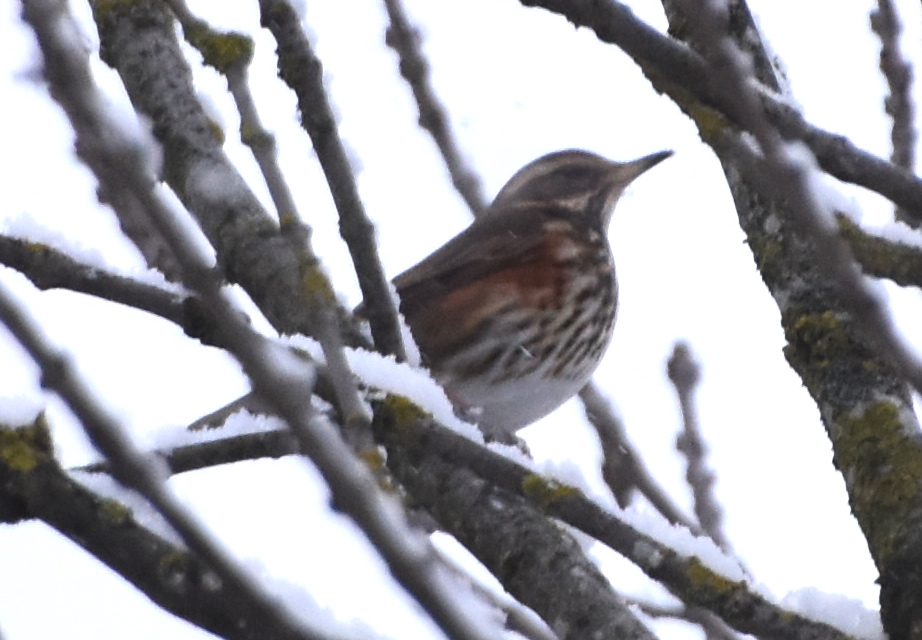 Redwing down 6+chattering ■■
Redwing down 6+chattering ■■ |
stereotype melodic slow medium (3-5 KHz) .
|
♫

|
| one note | ||
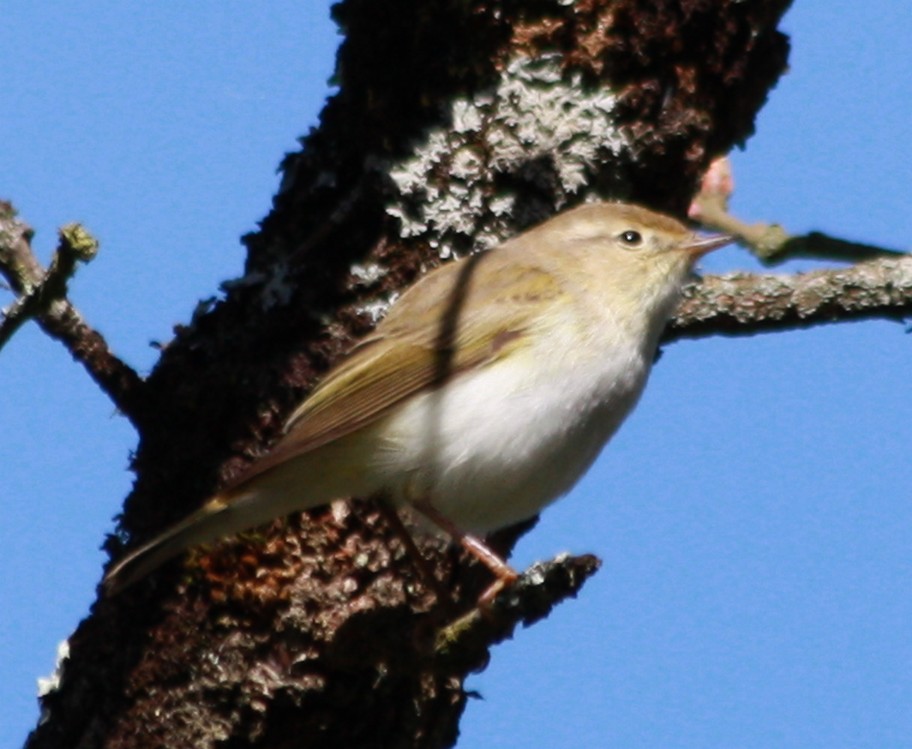 Western bonelli's warbler ■■
Western bonelli's warbler ■■ |
one note fast high (3-7 KHz) .
Single note repeated 6 or 8 times quickly in half a second
Song: |
♫

|
| non-musical | ||
| mimicry, cawing | ||
 Spotted nutcracker ■■
Spotted nutcracker ■■ |
mimicry, cawing non-musical slow low-high (1-10 KHz) .
Grehh, grehh, grehh!!
Song: |
♫

|
| simple rhythmic | ||
| whoop, trill | ||
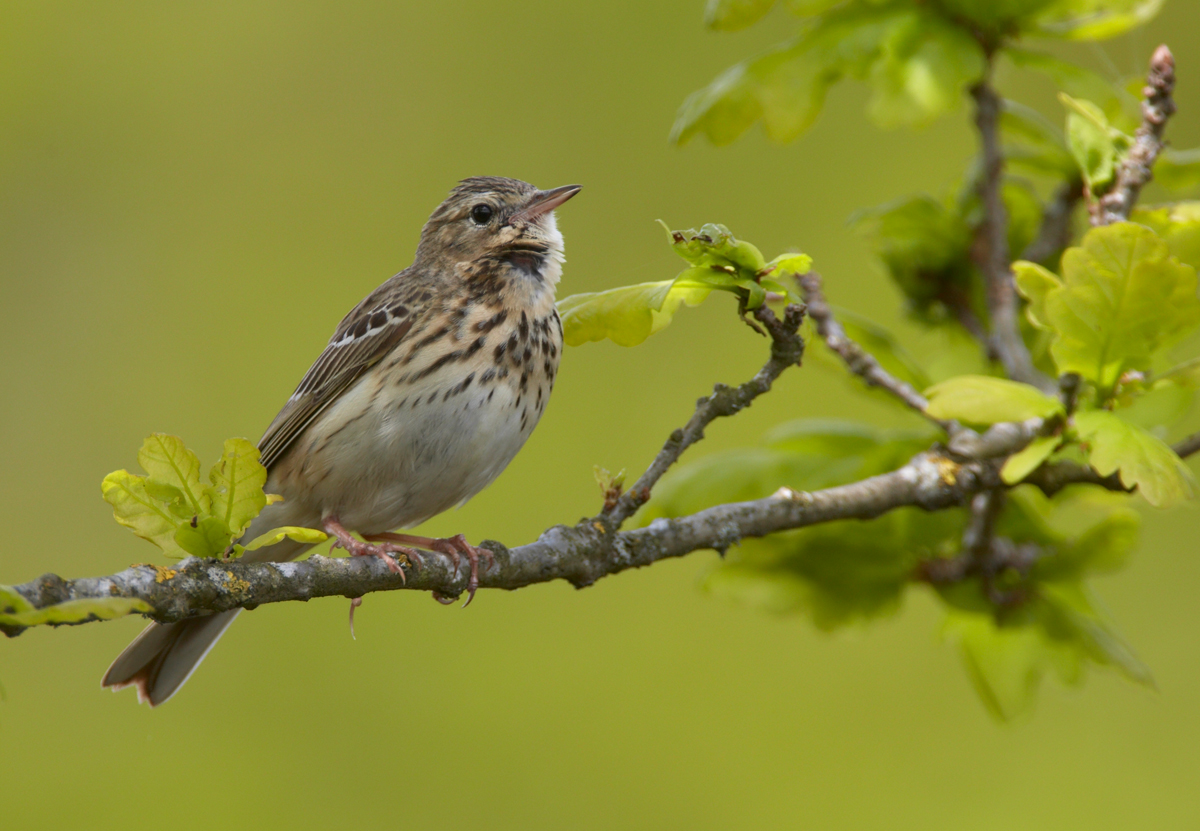 Tree pipit ■■
Tree pipit ■■ |
whoop, trill simple rhythmic slow medium (1-5 KHz) .
Reminds me of a greenfinch - series of trills, whoops and other sounds with a long pause
Song: |
♫

|
| trill | ||
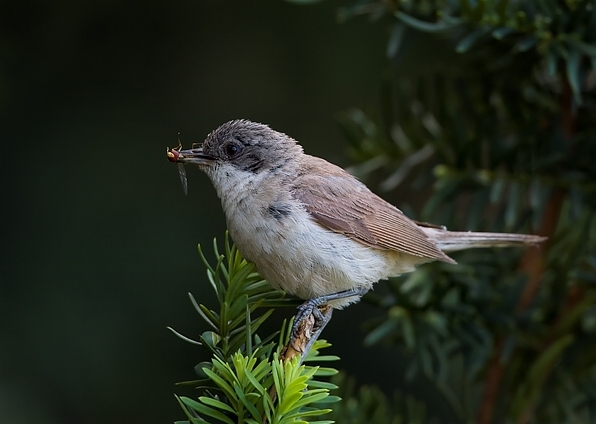 Lesser whitethroat ■■
Lesser whitethroat ■■ |
trill simple rhythmic slow medium (3-5 KHz) .
|
♫

|
| rasp | ||
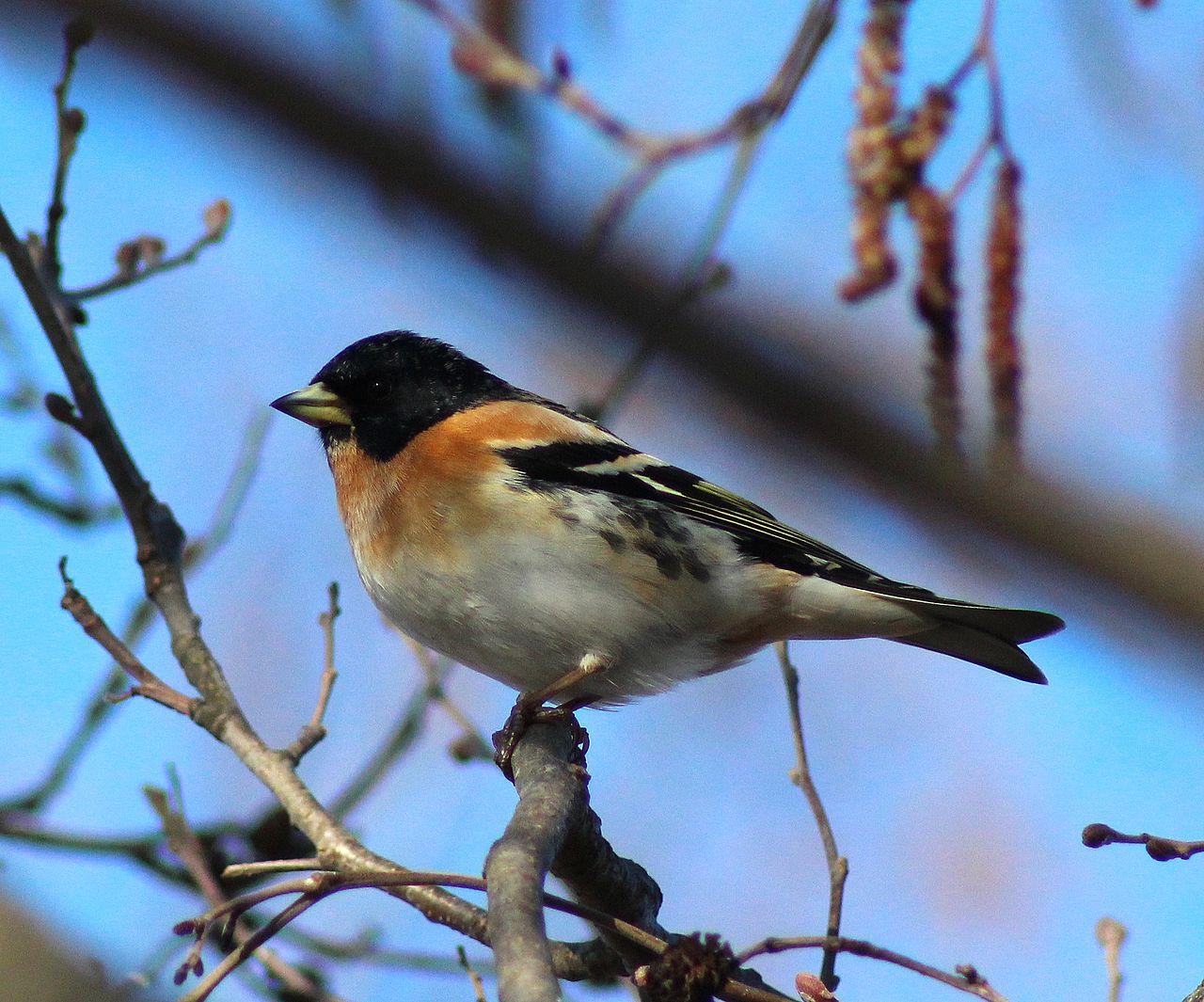 Brambling ■■
Brambling ■■ |
rasp simple rhythmic slow medium (1-5 KHz) .
General: Bergfink - call cheep plus two ascending Grünfink squawks. Song? Grünfink squawk but not descending, every 3-4 seconds. Song: |
♫
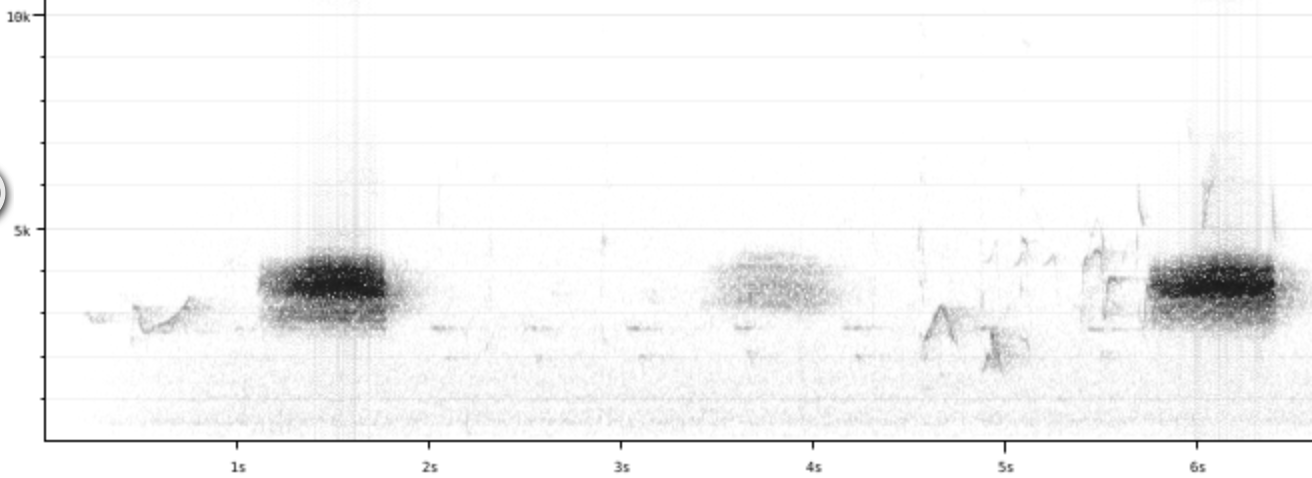
|
| non-musical | ||
| rattle | ||
|
|
rattle non-musical fast low-high (2-9 KHz) .
Song: |
♫

|
| rasp | ||
|
|
rasp non-musical slow medium (1-6 KHz) .
BirdID says song a mix of dry contact calls, BirdLife that it's almost only heard in flight. The XC recording is a bit of a chuckle to me.
Song: |
♫

|
| stereotype melodic | ||
 Red crossbill ■■
Red crossbill ■■ |
stereotype melodic slow low-high (2-10 KHz) .
Repeated hi-low pattern...well, doesn't always sound like that.
The very short beginning of my Stazersee recording before the static sets in does,
as well as a song found online.
One recording reminds me of cicada sounds.
Song: |
♫

|
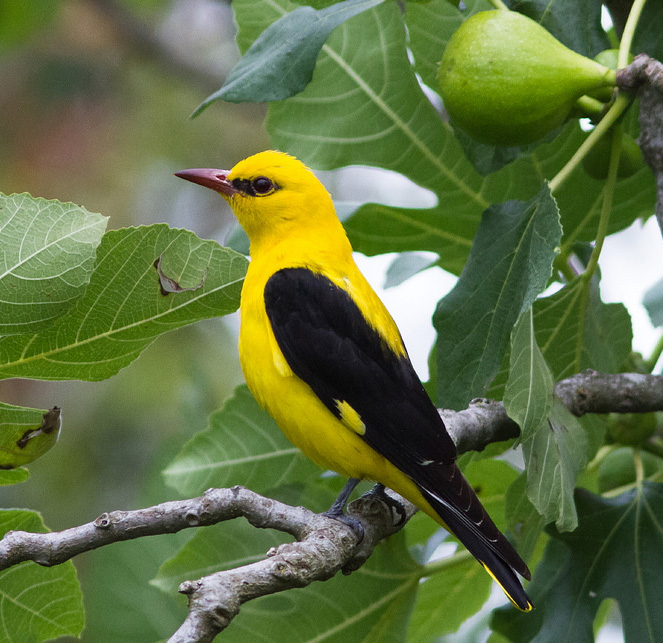 Eurasian golden oriole ■■
Eurasian golden oriole ■■ |
stereotype melodic slow low (0-1 KHz) .
A soft, lowish whistling. In my opinion, the golden oriole has a beautiful voice, but no imagination as to melody - it's always the same few notes.
Song: |
♫

|
| simple rhythmic | ||
|
|
simple rhythmic slow high (3-7 KHz) .
Songs I've heard alternate two notes and look like a sine wave on the sonogram.
Vogelwarte.ch: Apart from minor differences in diet and size, Alpine Tit and Willow Tit can only be identified by their song. The Willow Tit utters a series of long, descending notes («tyoo tyoo tyoo tyoo»), whereas the Alpine Tit’s territorial song consists of short notes on an even pitch («dee dee dee dee dee»).
See more here.
Song: | ♫ |
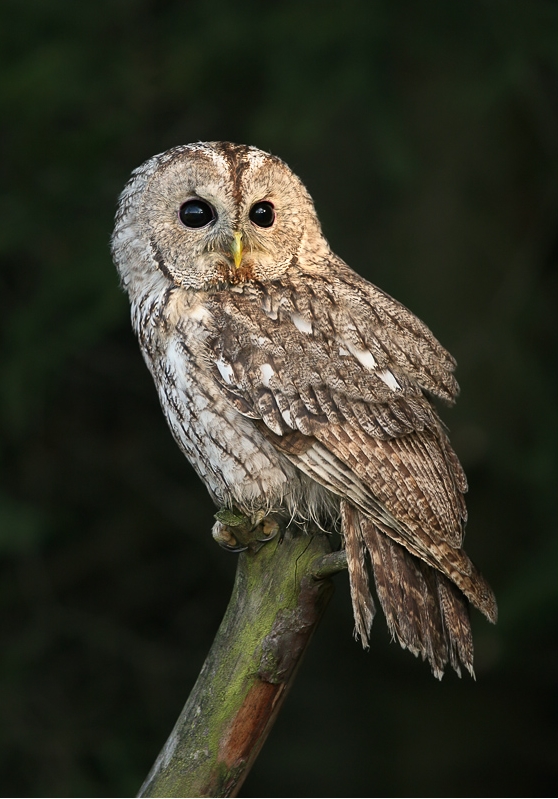 Tawny owl ■■
Tawny owl ■■ |
.
Automatically generated from Xeno-Canto recording
Song: | ♫ |
| sings 30 seconds or longer | ||
| mimicry | ||
|
|
mimicry sings 30 seconds or longer fast high (3-9 KHz) .
|
♫

|
| stereotype melodic | ||
|
|
stereotype melodic slow high (3-9 KHz) .
General: Meistens hoert man das Pfief...chk..chk..Pfief von den Rufen, siehe dort. Song: Nabu: Der Gesang ist ein feines Trillern und selten zu hören (someone at XenoCanto compares it to a blue tit trill). [Link] Song: Song: high tsee-tsee; funny downhill trill |
♫

|
| simple rhythmic | ||
| slur | ||
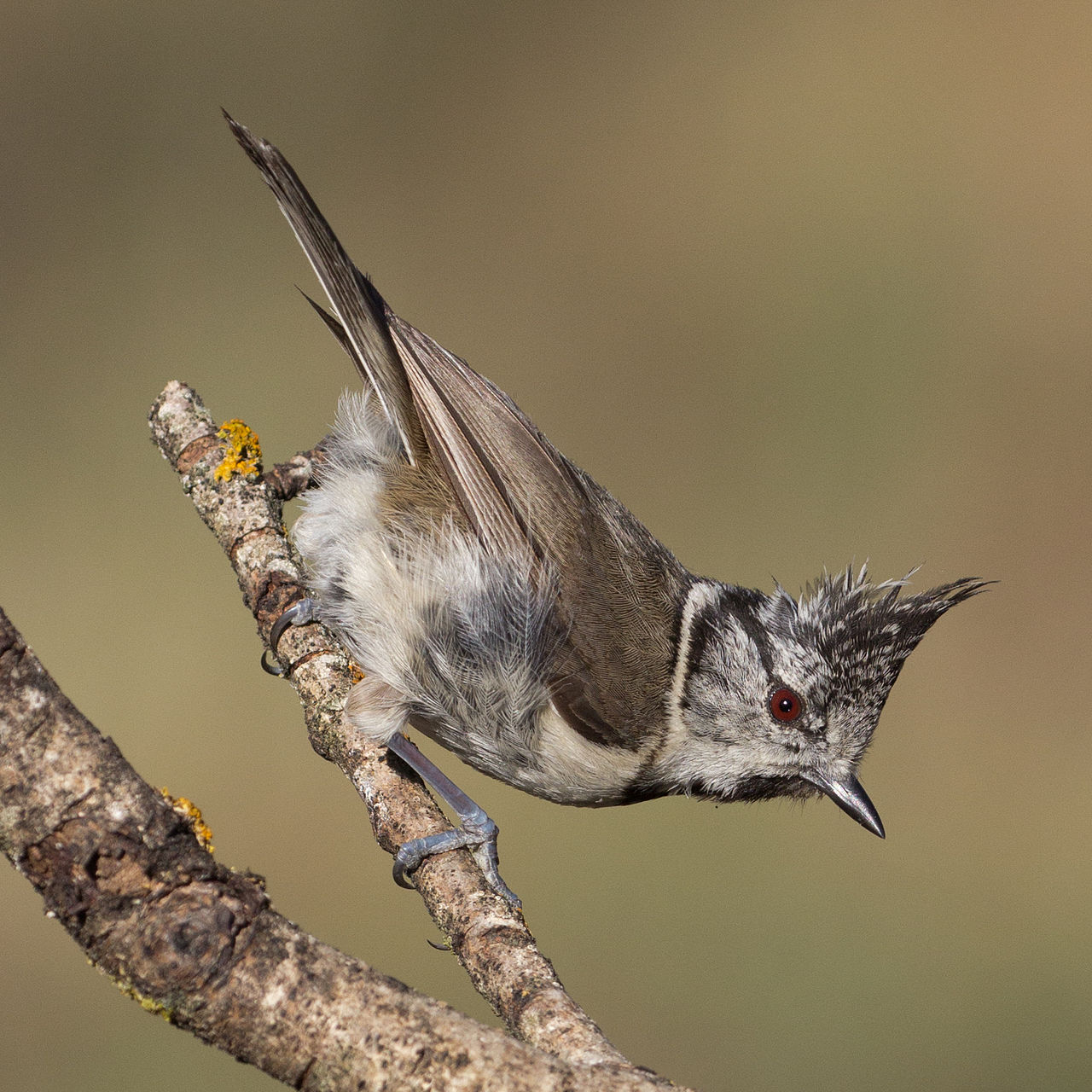 European crested tit ■■
European crested tit ■■ |
slur simple rhythmic fast high (3-9 KHz) .
Higher-pitched than great tit - how distinguish from coal tit, etc?
Song: |
♫

|
| stereotype melodic | ||
|
|
stereotype melodic slow high (4-7 KHz) .
General: It sounds to me like a 5-7 note song like 'five k low high higher', 'short song in the gar-DEN'. The individual notes have the same backward checkmark shape as the call. It's basically the same across Europe. Song: |
♫

|
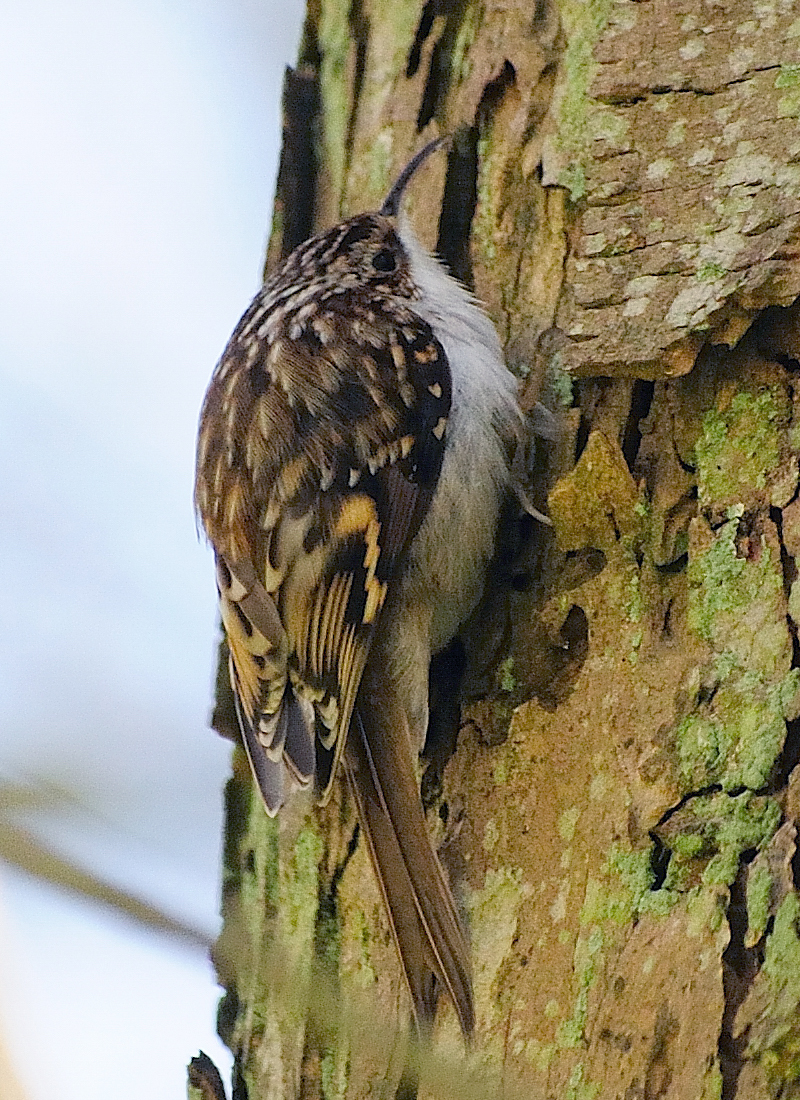 Eurasian treecreeper Sagging tree branch ■■
Eurasian treecreeper Sagging tree branch ■■ |
stereotype melodic slow medium (1-5 KHz) .
I say: it sounds like a faster higher chaffinch song. Wikipedia says: The male's song begins with srrih, srrih followed in turn by a few twittering notes, a longer descending ripple, and a whistle that falls and then rises.
Song: |
♫

|
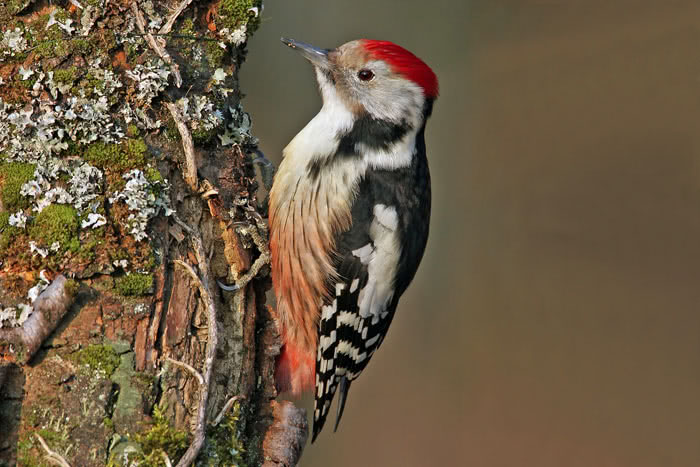 Middle spotted woodpecker ■■
Middle spotted woodpecker ■■ |
.
Automatically generated from Xeno-Canto recording
Song: |
♫

|
 Black woodpecker ■■
Black woodpecker ■■ |
.
Automatically generated from Xeno-Canto recording
Song: | ♫ |
| simple rhythmic | ||
| drumming | ||
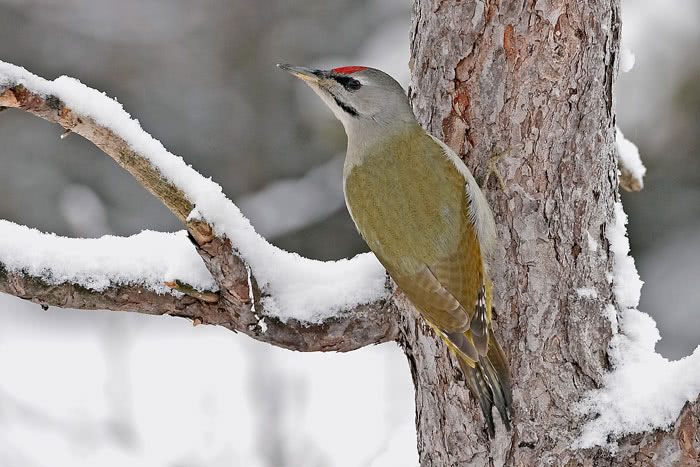 Grey-headed woodpecker ■■
Grey-headed woodpecker ■■ |
drumming simple rhythmic fast medium (0-4 KHz) .
Drumming in lieu of song. Fast, constant, somehow less harsh than great and middle spotted woodpeckers.
Song: |
♫
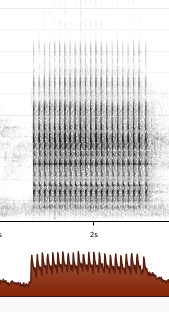
|
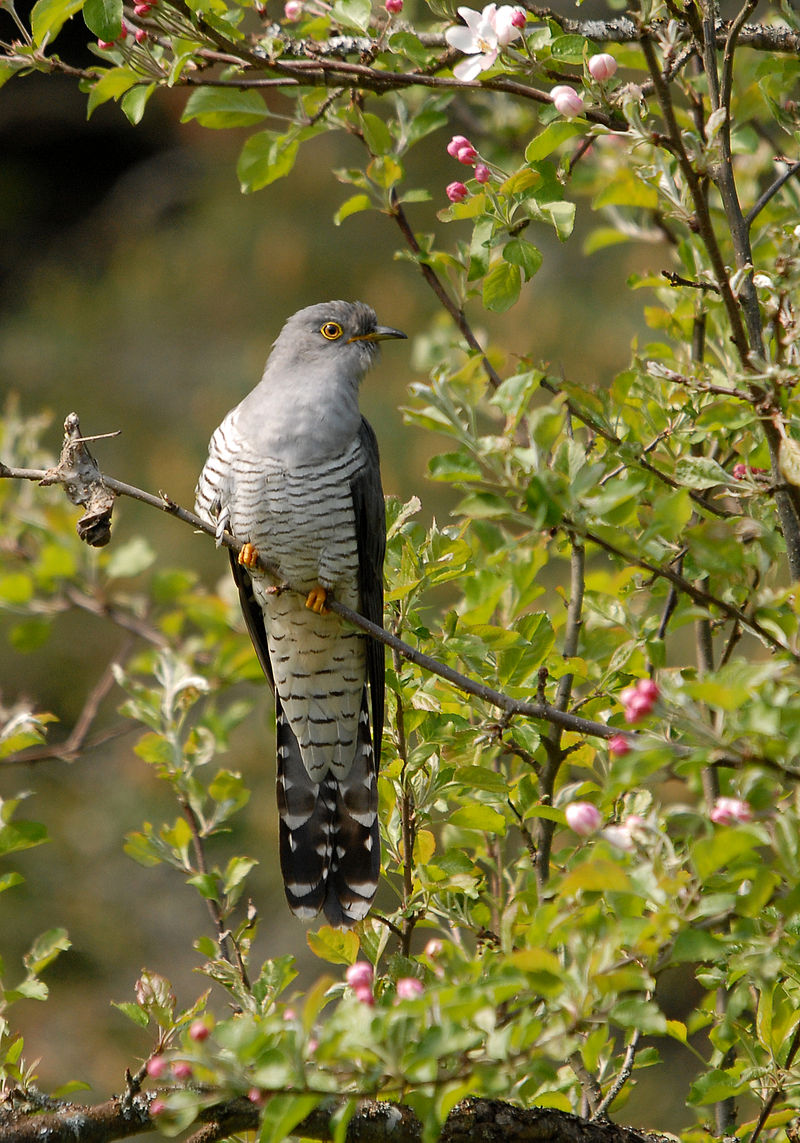 Common cuckoo ■■
Common cuckoo ■■ |
simple rhythmic slow low (0-1 KHz) .
Two-noter
Song: |
♫
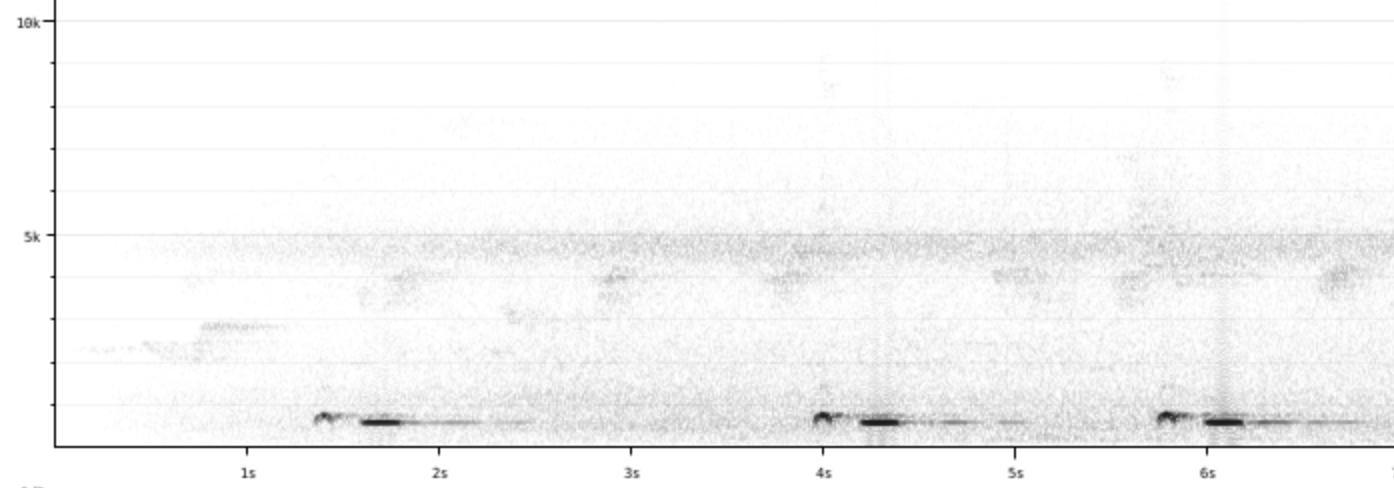
|
| stereotype melodic | ||
|
|
stereotype melodic slow low-high (2-8 KHz) .
3-note long M, pause, HL (somewhat falling)...Gim! Gim-peeel! Sounds a bit like a pirol.
Song: |
♫

|
| simple rhythmic | ||
| trill | ||
|
|
trill simple rhythmic fast high (5-8 KHz) .
Sid-sid-sid-sirrrr. 3 secs, then 5 secs pause. At bird-song.ch I hear a slow-fast one-noter, about 8 slow ones in 1.5 seconds, then a trill of 25 fast ones.
Song: |
♫
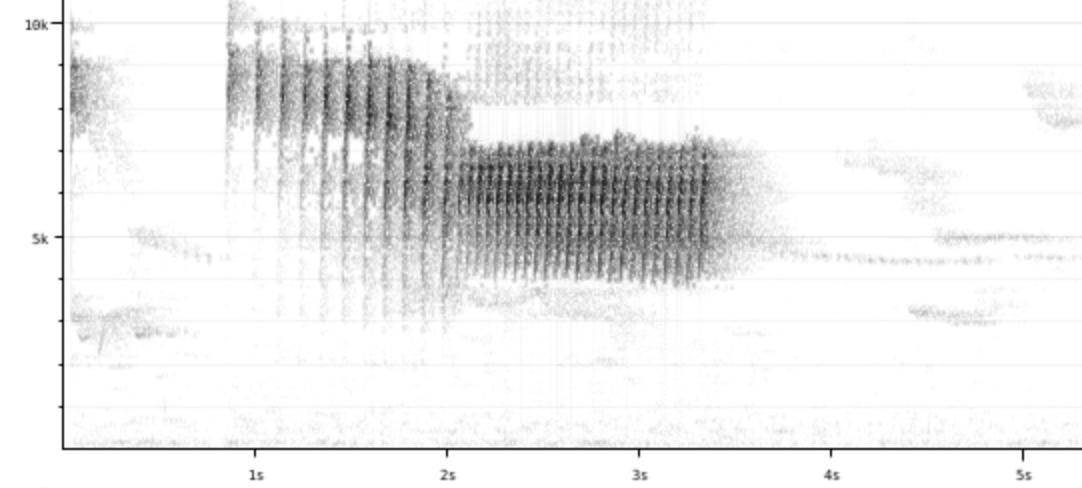
|
| stereotype melodic | ||
|
|
stereotype melodic fast high (3-10 KHz) .
Nice short melody, often with 2-note parts. Blackbird-like but little variation (though differs in dialect).
Song: |
♫

|
| simple rhythmic | ||
 Nightjar ■■
Nightjar ■■ |
simple rhythmic fast medium (2-4 KHz) .
Buzzing like machinery or a (BirdID says) a cricket. Changes pitch at times.
Song: |
♫

|
|
|
simple rhythmic slow medium (1-5 KHz) .
BirdID says Song a primitive, plaintive series of short phrases, often with only 1-2 syllables (I heard 2-3 in Amden, sometimes chirpy, sometimes less musical).
Song: |
♫

|
Practice
♫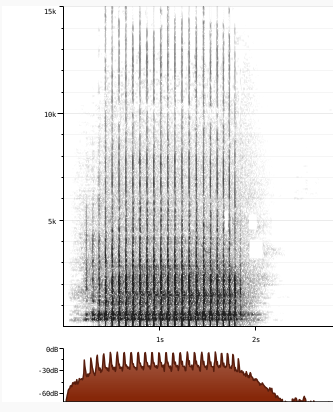 Answer
Eurasian three-toed woodpecker Dreizehenspecht trommelt
♫
Answer
Eurasian wren XC554714-Zaunkoenig song.
♫
Answer
Coal tit Tannenmeise lmhlmhlmh plus kettensäge.
♫
Answer
Common buzzard
♫
Answer
Willow tit
♫
Answer
Eurasian three-toed woodpecker Dreizehenspecht trommelt
♫
Answer
Eurasian wren XC554714-Zaunkoenig song.
♫
Answer
Coal tit Tannenmeise lmhlmhlmh plus kettensäge.
♫
Answer
Common buzzard
♫
Answer
Willow tit
♫
 Answer
European crested tit XC560609-european-crested-tit-lophophanes cristatus2020.05.20 11.51 01 song.
♫
Answer
European crested tit XC560609-european-crested-tit-lophophanes cristatus2020.05.20 11.51 01 song.
♫
 Answer
Nightjar
♫
Answer
Nightjar
♫
 Answer
Jackdaw XC604997 - Western Jackdaw - Coloeus monedula - call, recorded in England.
♫
Answer
Jackdaw XC604997 - Western Jackdaw - Coloeus monedula - call, recorded in England.
♫
 Answer
Common firecrest XC769178 - Common Firecrest - Regulus ignicapilla - song recorded in the Netherlands.
♫
Answer
Common starling
♫
Answer
Great tit Ungewöhnlicher kohlmeise gesang hmhmlmlmhmh, approximately notes GCGCgCgCGCG.
♫
Answer
Common firecrest XC769178 - Common Firecrest - Regulus ignicapilla - song recorded in the Netherlands.
♫
Answer
Common starling
♫
Answer
Great tit Ungewöhnlicher kohlmeise gesang hmhmlmlmhmh, approximately notes GCGCgCgCGCG.
♫
 Answer
Lesser spotted woodpecker
♫
Answer
Lesser spotted woodpecker
♫
 Answer
Red crossbill XC775798 - Red Crossbill - Loxia curvirostra - song.
♫
Answer
Red crossbill XC775798 - Red Crossbill - Loxia curvirostra - song.
♫
 Answer
Grey-headed woodpecker
♫
Answer
Grey-headed woodpecker
♫
 Answer
Marsh tit
♫
Answer
Marsh tit
♫
 Answer
European pied flycatcher
♫
Answer
European pied flycatcher
♫
 Answer
Short-toed treecreeper
♫
Answer
Short-toed treecreeper
♫
 Answer
Goldcrest XC475114-Regulus regulus - Goldcrest song.
♫
Answer
Common chiffchaff
♫
Answer
Goldcrest XC475114-Regulus regulus - Goldcrest song.
♫
Answer
Common chiffchaff
♫
 Answer
Wood warbler
♫
Answer
Wood warbler
♫
 Answer
Eurasian siskin
♫
Answer
Eurasian siskin
♫
 Answer
Eurasian golden oriole
♫
Answer
Eurasian golden oriole
♫
 Answer
European nuthatch Is the brevity what makes it a song, whereas calls seem to go on endlessly?
♫
Answer
European nuthatch Is the brevity what makes it a song, whereas calls seem to go on endlessly?
♫
 Answer
Fieldfare
♫
Answer
Common blackbird Repetitiver, einfallsloser Amsel den ich für einen Misteldrossel gehalten habe, dazu eine Kohlemeise der lmh singt und ich mit einer Tannen-meise gewechselt habe.
♫
Answer
Fieldfare
♫
Answer
Common blackbird Repetitiver, einfallsloser Amsel den ich für einen Misteldrossel gehalten habe, dazu eine Kohlemeise der lmh singt und ich mit einer Tannen-meise gewechselt habe.
♫
 Answer
Dunnock XC778759 - Dunnock - Prunella modularis - song recorded in Spain.
♫
Answer
Dunnock XC778759 - Dunnock - Prunella modularis - song recorded in Spain.
♫
 Answer
Ring ouzel
♫
Answer
Ring ouzel
♫
 Answer
Western bonelli's warbler
♫
Answer
Western bonelli's warbler
♫
 Answer
Lesser whitethroat
♫
Answer
Lesser whitethroat
♫
 Answer
Tree pipit
♫
Answer
Tree pipit
♫
 Answer
Eurasian blue tit XC555029 blaumeise.
♫
Answer
Eurasian blue tit XC555029 blaumeise.
♫
 Answer
Common raven XC779842 - Northern Raven - Corvus corax corax - call recorded in Sweden.
♫
Answer
Black cap warbler
♫
Answer
Common raven XC779842 - Northern Raven - Corvus corax corax - call recorded in Sweden.
♫
Answer
Black cap warbler
♫
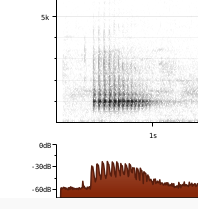 Answer
Great spotted woodpecker Great spotted woodpecker drumming
♫
Answer
Great spotted woodpecker Great spotted woodpecker drumming
♫
 Answer
Brambling
♫
Answer
Brambling
♫
 Answer
Eurasian bullfinch
♫
Answer
Eurasian bullfinch
♫
 Answer
Mistle thrush XC800869 - Mistle Thrush - Turdus viscivorus.
♫
Answer
Mistle thrush XC800869 - Mistle Thrush - Turdus viscivorus.
♫
 Answer
Middle spotted woodpecker 2024-04-07 13 50 mittelspecht bei Seegräben, heavily edited with noise reduction, hipass, etc.
♫
Answer
Middle spotted woodpecker 2024-04-07 13 50 mittelspecht bei Seegräben, heavily edited with noise reduction, hipass, etc.
♫
 Answer
Spotted nutcracker
♫
Answer
Black woodpecker
♫
Answer
Song thrush
♫
Answer
Spotted nutcracker
♫
Answer
Black woodpecker
♫
Answer
Song thrush
♫
 Answer
Long-tailed tit
♫
Answer
Long-tailed tit
♫
 Answer
Eurasian treecreeper XC656422 - Eurasian Treecreeper - Certhia familiaris - song, recorded in Sweden.
♫
Answer
Tawny owl Waldkauz in Carona.
♫
Answer
Eurasian treecreeper XC656422 - Eurasian Treecreeper - Certhia familiaris - song, recorded in Sweden.
♫
Answer
Tawny owl Waldkauz in Carona.
♫
 Answer
Hawfinch XC712663 - Hawfinch - Coccothraustes coccothraustes - whit whit tsirp, recorded in Sweden, redubbed by me to a call.
♫
Answer
Hawfinch XC712663 - Hawfinch - Coccothraustes coccothraustes - whit whit tsirp, recorded in Sweden, redubbed by me to a call.
♫
 Answer
European robin XC782997 - European Robin - Erithacus rubecula - song recorded in Italy.
♫
Answer
Common wood pigeon
♫
Answer
European robin XC782997 - European Robin - Erithacus rubecula - song recorded in Italy.
♫
Answer
Common wood pigeon
♫
 Answer
Redwing
♫
Answer
Redwing
♫
 Answer
Common cuckoo XC801215 - Common Cuckoo - Cuculus canorus.
♫
Answer
European greenfinch
Answer
Common cuckoo XC801215 - Common Cuckoo - Cuculus canorus.
♫
Answer
European greenfinch
Birds with insufficient information about songs/calls
| Bird | Description | Audio |
| non-musical | ||
| drumming | ||
|
|
drumming non-musical fast low (1-3 KHz) .
Song: Other: ‘Drumming’ is the sound that Great Spotted Woodpeckers make by hammering their bills against dead wood 10-20 times over 2-3 seconds. The sound resonates in the dead wood and can be heard over large distances. This drumming acts as an advert and is used by Great spotted Woodpeckers and other woodpecker species instead of a song. [From the GardenBird web site] Nabu: Manchmal, bei strahlendem Sonnenschein, fangen die Spechte schon im Dezember an zu trommeln. [NABU Vogel des Jahres 1997] Call: Nabu: Das bekannteste Geräusch des schwarz-weißen Spechtes ist aber wohl sein kurzes, aber häufiges Trommeln. [Link] |
♫

|
|
|
.
Automatically generated from Xeno-Canto recording
Call: | ♫ |
| simple rhythmic | ||
| drumming | ||
|
|
drumming simple rhythmic fast medium (0-4 KHz) .
Drumming in lieu of song. Fast, constant.
Call: |
♫

|
|
|
.
Automatically generated from Xeno-Canto recording
Call: Nabu: Ein hartes „kjack“ oder „schack“ sowie ein raues „tschräh“ hört man am häufigsten von der Dohle. Sie ist ein begabtes Stimmwunder und hat eine Vielzahl von Lauten und Imitationen auf Lager. [Link] |
♫

|
 Hawfinch ■■
Hawfinch ■■ |
.
Automatically generated from Xeno-Canto recording
Call: |
♫

|
| simple rhythmic | ||
| drumming | ||
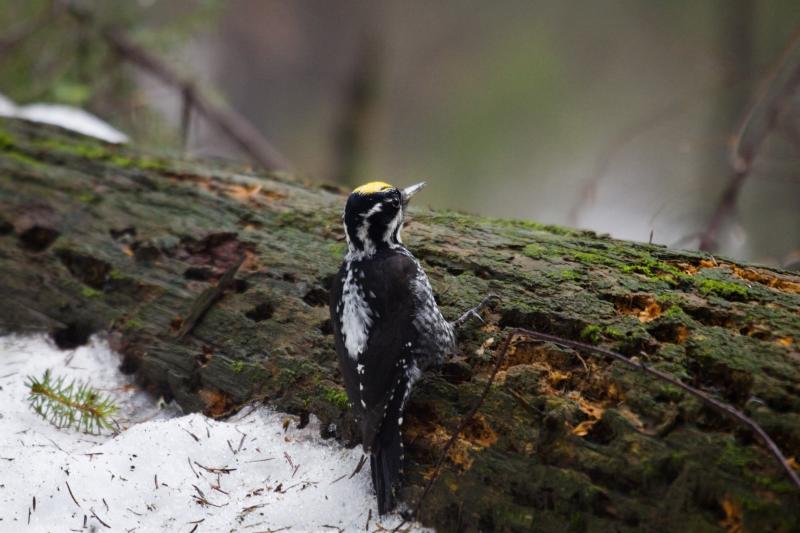 Eurasian three-toed woodpecker ■■
Eurasian three-toed woodpecker ■■ | drumming simple rhythmic fast low (1-3 KHz) . Fast drumming, constant volume, longer than great spotted woodpecker's. |
♫

|
|
| . Automatically generated from Xeno-Canto recording |
♫

|
 Eurasian woodcock ■■
Info about calls, not song!!
Eurasian woodcock ■■
Info about calls, not song!!
|
Call: | |
 Long-eared owl ■■
Info about calls, not song!!
Long-eared owl ■■
Info about calls, not song!!
| ||
 Eurasian pygmy-owl ■■
Info about calls, not song!!
Eurasian pygmy-owl ■■
Info about calls, not song!!
|
Call: | |
 Hazel grouse ■■
Hazel grouse ■■ |
Song: | |
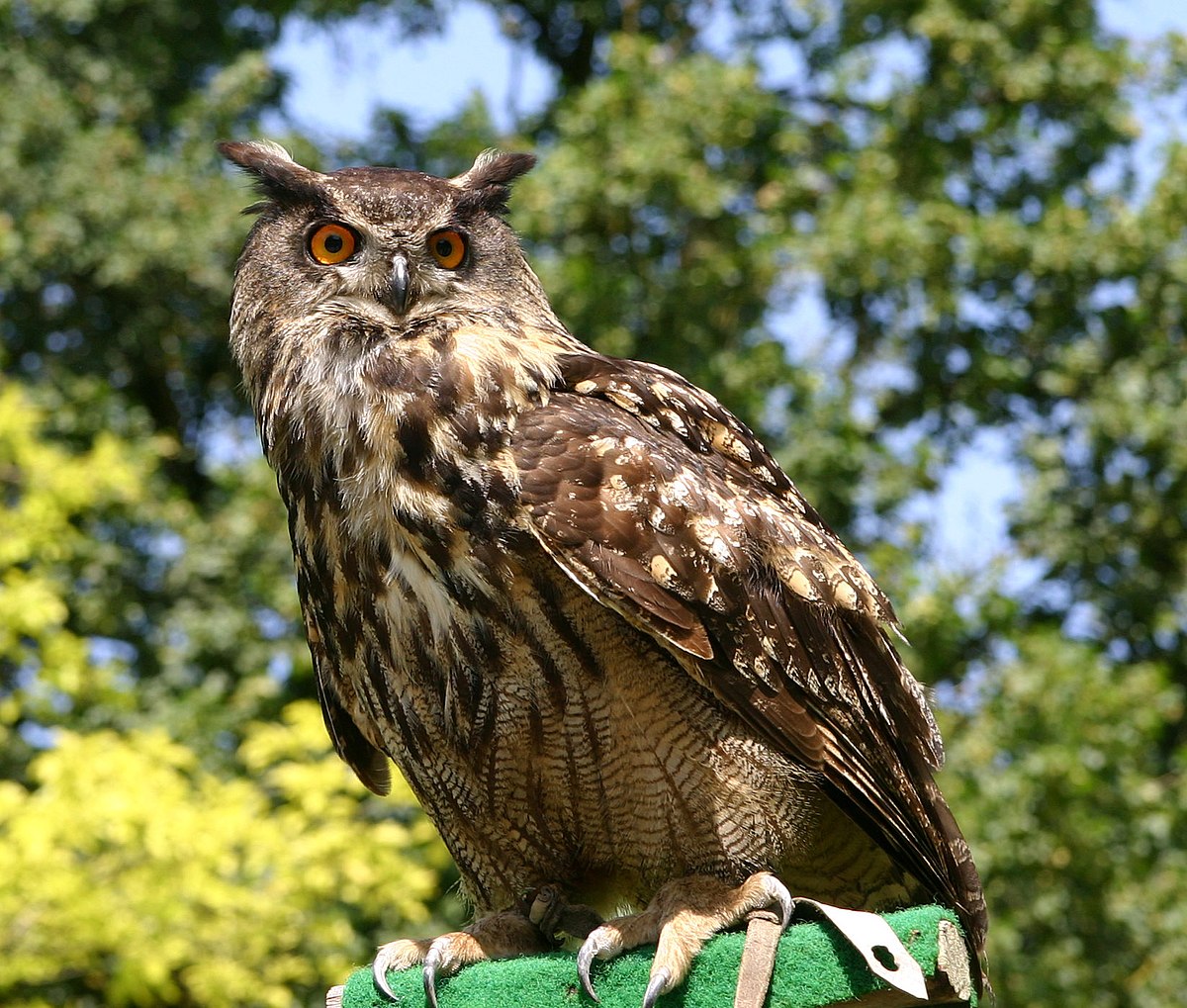 Eurasian eagle-owl ■■
Eurasian eagle-owl ■■ |
Song: | |
 Boreal owl ■■
Info about calls, not song!!
Boreal owl ■■
Info about calls, not song!!
|